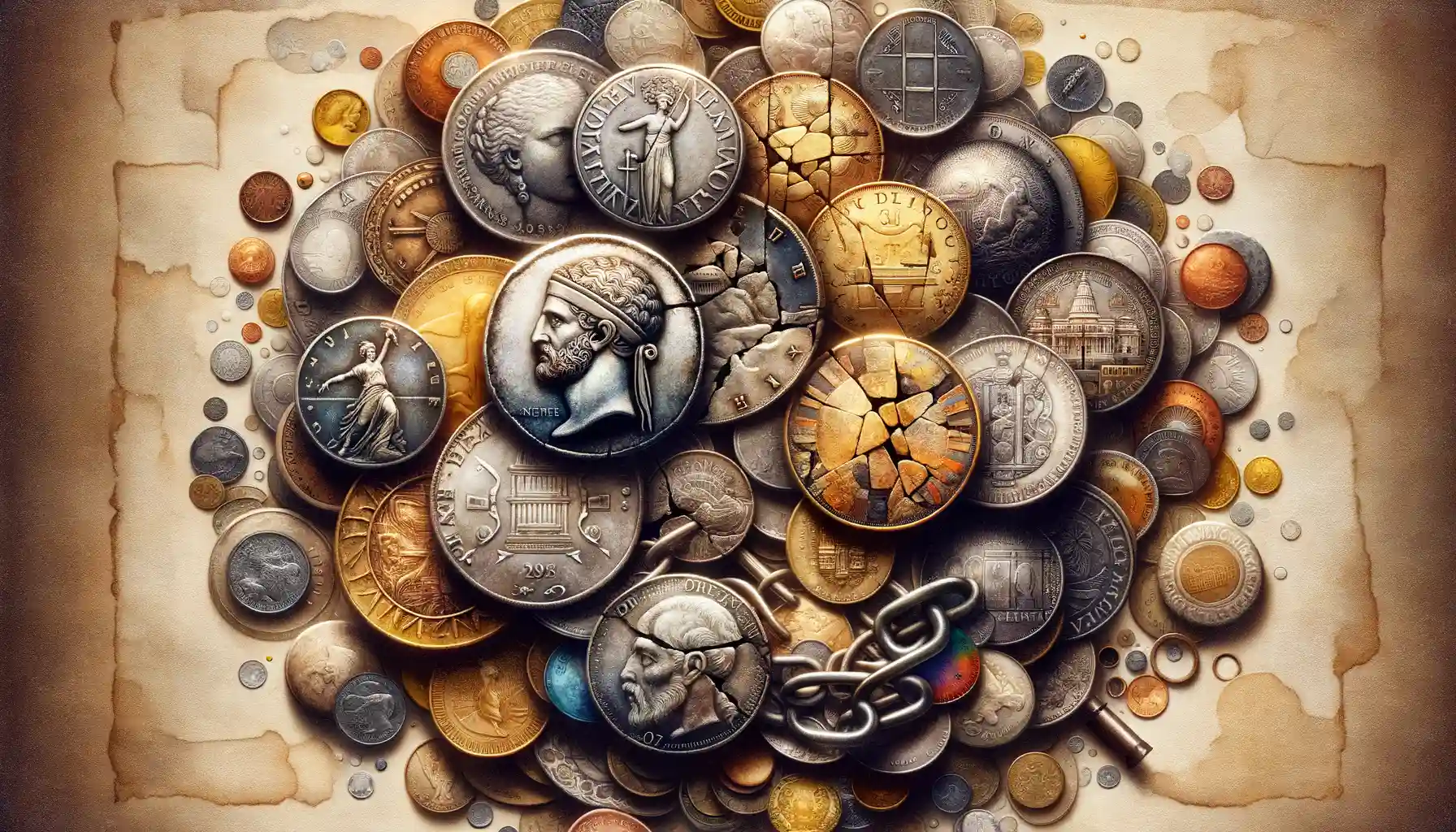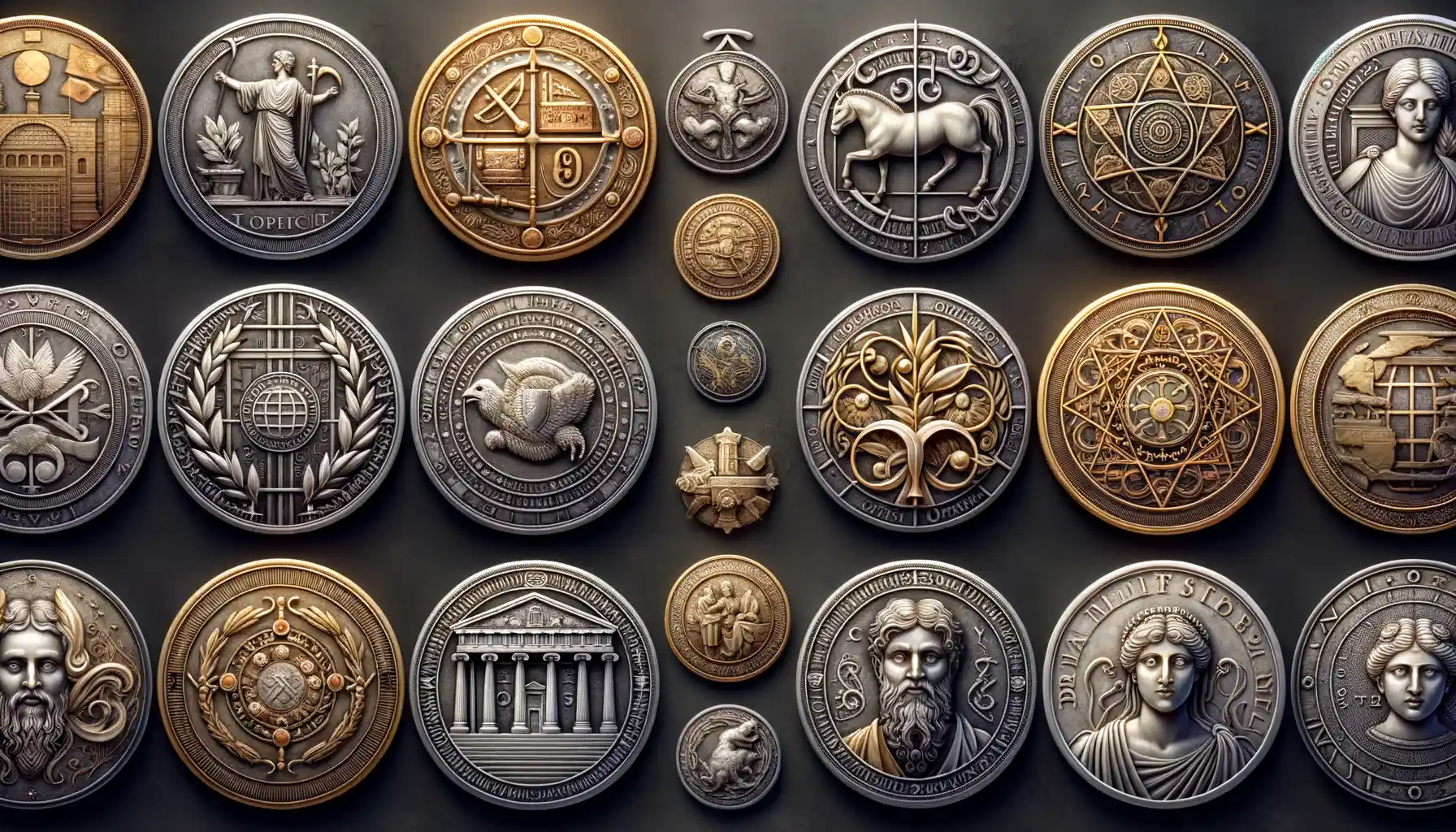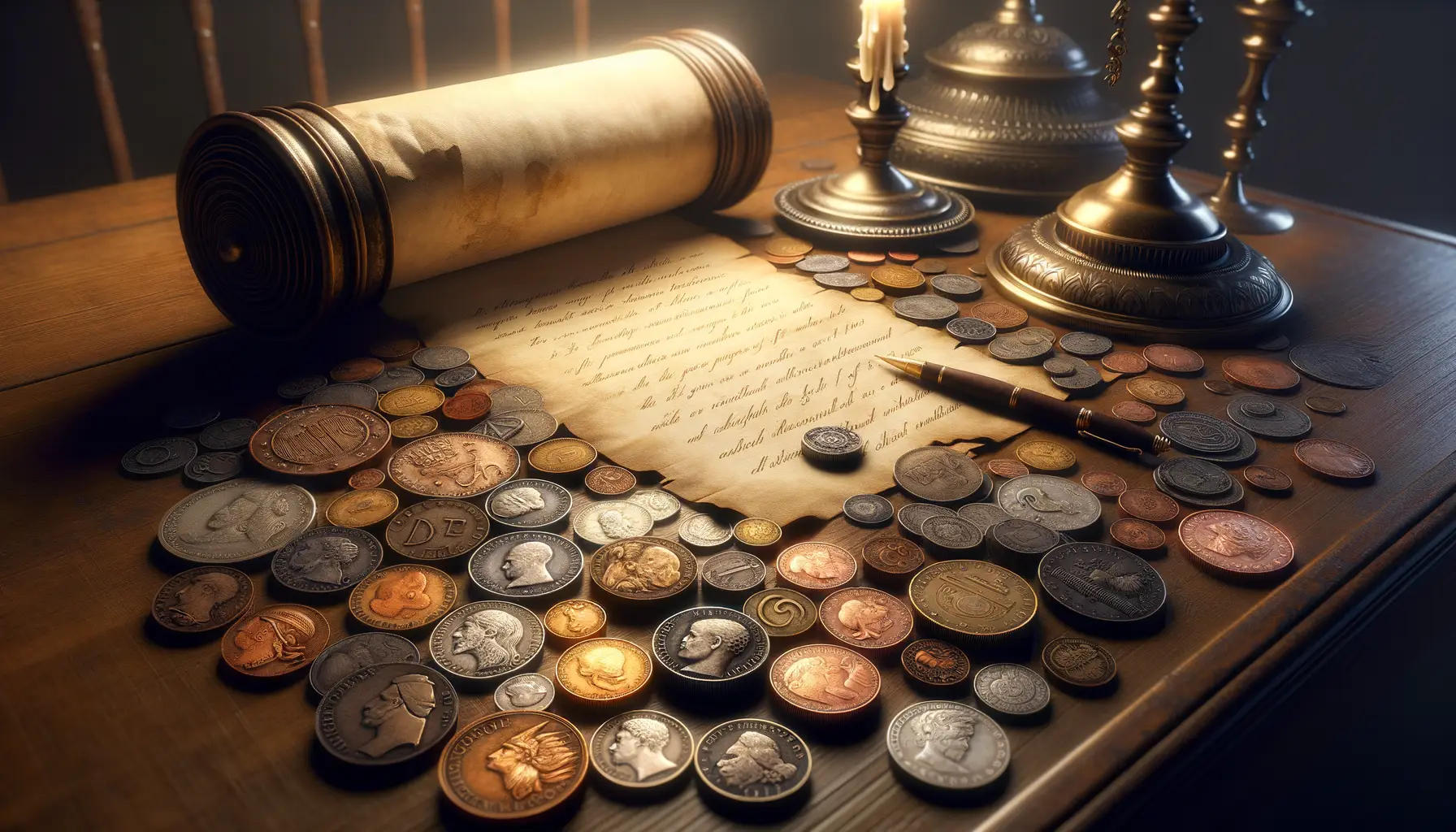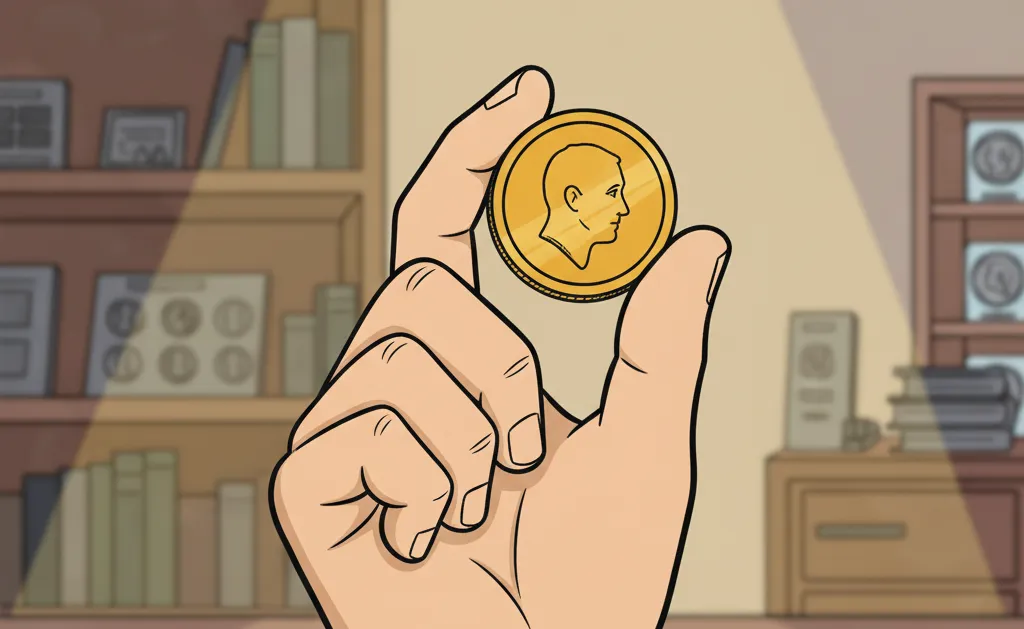Historical Background of Coinage and Its Role in Societal Change
The Earliest Coinage: A Spark in Human Innovation
Imagine standing in the bustling markets of ancient Lydia, where merchants no longer haggled over chunks of silver or bags of barley. Instead, gleaming discs of stamped metal passed from hand to hand. These first coins, born around 600 BCE, were more than mere tools for trade—they were revolutionary symbols of trust and practicality. Their standardized weights and markings said, “You can rely on me,” an almost whispered promise that transcended language barriers.
Before coins, bartering was chaotic. How many sheep equal a sack of grain? The answer often depended on who shouted louder! But with coinage, economies found their rhythm. Suddenly, value had a face, oftentimes literal—kings, gods, and cultural symbols emblazoned on their surfaces like badges of belonging.
- Coins unified regions by creating shared systems of trade.
- They fostered societal hierarchies, as wealth could now be hoarded, displayed—or stolen.
- Perhaps most profoundly, they transformed trust. No longer bound to the reputation of individuals, value was etched into the metal itself.
Catalysts for Change: More Than Money
But coins did more than lubricate commerce; they rewrote the fabric of society. Think of ancient Rome, where **currency reforms** mirrored political shifts. Or revolutionary France, minting entirely new coins to break with the monarchy. Every coin carried not just a denomination but a message: “This is who we are,” or perhaps, “This is who we hope to become.”
Coins became tools of rebellion and proclamation. They toppled dynasties and forged alliances. Whether engraved with a crowned visage or a clenched fist, they told the stories of their time—stories of ambition, power struggles, and radical change. Could something as small as a coin really wield such influence? Absolutely. It wasn’t just metal—it was meaning.
Coinage as a Symbol of Identity and Resistance

Coins as Guardians of Cultural Identity
Coins—those small, jingling pieces of metal in your pocket—are far more than simple currency. In revolutionary movements, they often serve as silent yet powerful guardians of cultural identity. Picture this: a community under oppressive rule minting its own coins, stamping each one with symbols that scream, “We’re still here!” That’s not just currency; it’s defiance in your hand.
Think of the iconic Irish Free State coinage of 1928, adorned with harps and other Celtic designs. For the Irish people, these coins weren’t mere shillings; they were tangible proof of sovereignty and an enduring connection to their heritage. Coins like these carried coded messages, whispering stories of pride, resilience, and independence to every palm they passed through.
- Greek drachmas during Ottoman rule: Echoes of ancient glory etched onto rebellion-era coins.
- American Continental dollars: Bold declarations of freedom against British tyranny.
Tools of Resistance in Your Pocket
But here’s the twist. Revolutionary coins didn’t just reflect identity—they were weapons of resistance. By creating alternative currencies, rebel groups undermined oppressive economies. The Confederate States during the American Civil War minted their own coins to distance themselves from the Union’s financial system. Each coin was a tiny act of sabotage, a clear “no” to economic submission.
And who could forget the ingenious Polish underground coins forged during Nazi occupation? They weren’t just practical replacements for lost currency; they became emblems of defiance in a time of suffocating control. These coins showed that even in the darkest times, a people’s spirit can remain unbroken, cast in unyielding metal.
Every coin tells a story. What’s yours?
Economic Impact of Revolutionary Coinage

The Ripple Effects of Revolutionary Coins on Local Economies
Picture this: a struggling community, battered by war or resistance, suddenly finds itself crafting its own currency—a bold move that flips the script on economic dependency. Revolutionary coinage was more than just metal stamped with a cause; it was economic adrenaline, coursing through insurgent veins. But what did this really mean for the markets and people on the ground?
First, imagine the chaos of replacing an old regime’s currency. Revolutionary coins often removed the stranglehold of oppressive monetary systems, but they didn’t appear in a vacuum. They had to fight tooth and nail for trust. Trust, after all, is the cornerstone of currency. Would *you* trade your goods for shiny new symbols of rebellion, or hold tight to safer, familiar coins?
- They fostered localized trade—communities finally relying on their own resources.
- They disrupted monopolistic markets tied to toppled rulers.
- At times, they even funded clandestine operations, fueling revolutions both economically and ideologically.
But not everything glittered as gold. Counterfeiting exploded, inflation often lurked in the shadows, and the fragile balance between symbolism and value could crack under pressure. Even so, for revolutionaries, economic chaos wasn’t a roadblock—it was part of the fire they were stoking. It was exciting, disruptive, and utterly transformative.
Political Messages Conveyed Through Coinage Designs

Symbols of Power Minted in Metal
Coins have always carried messages, but during revolutionary movements, they transformed into something much greater—a loud proclamation of defiance and vision. Think of them as pocket-sized billboards, silently yet boldly declaring ideals to anyone who dared to grasp them.
When rebels designed their own coinage, it wasn’t just about creating currency—it was about crafting identity. For instance, the American Revolutionary War gave rise to coins etched with the words “Liberty” and “Independence”, a daring challenge to British rule. Similarly, during the French Revolution, imagery shifted dramatically. Out went monarchic crowns and in came symbols like laurel wreaths, Phrygian caps, and allegorical women embodying freedom.
- The deliberate removal of royal insignias shouted: “Your time is over.”
- Icons like clenched fists or broken chains spoke to hope and unity among the oppressed.
- Latin mottos often whispered dreams of justice—timeless yet universal.
These designs weren’t random; they were masterstrokes, consciously aimed at stirring hearts and rallying action. One glance, and you’d know: this isn’t just change—it’s revolution cast in silver and gold.
The Unspoken Language of Power
Let’s not forget the people who held these coins. Imagine an insurgent gripping a newly minted piece, stained from passing through countless hands. What did that coin say to them? It was validation: “Your fight matters. You belong to something bigger.” Meanwhile, to those resisting the revolution, the coinage was proof that the old world was crumbling before their eyes.
Sometimes, even the material mattered. Revolutionaries often used reclaimed metals—melted church bells, confiscated aristocratic silver—as if to declare, “Look what we’ve taken back!” The weight of such coins wasn’t measured in ounces but in meaning.
Each piece told a story, alive with rebellion.
Legacy of Coinage in Modern Revolutionary Narratives

From Currency to Chronicles: How Coins Tell Stories
It’s easy to overlook a coin—a small object jingling in your pocket—but history whispers through its edges. The legacy of revolutionary coinage goes beyond its monetary value. In modern narratives, these humble tokens have become storytellers, preserving the ideals, struggles, and defiance of past movements. Think of them as miniature time capsules, where political upheaval and cultural identity are etched in metal.
Take the example of post-revolutionary France. Coins emblazoned with symbols like the Phrygian cap or liberty trees didn’t merely serve as currency; they spoke directly to the hearts of citizens, reaffirming “Liberté, égalité, fraternité.” Fast forward to today, and these same designs resurface in films, literature, and even street art, connecting contemporary audiences to the ideals of freedom.
- Movies like “Les Misérables” weave coins into key moments, making them emotional triggers tied to resistance.
- Modern artists reimagine revolutionary coin imagery in conceptual works, breathing new life into old visual codes.
Isn’t it fascinating how something as small as a coin can ripple across centuries, urging us to remember and question? It seems coins aren’t just objects—they’re revolutionaries in disguise.





